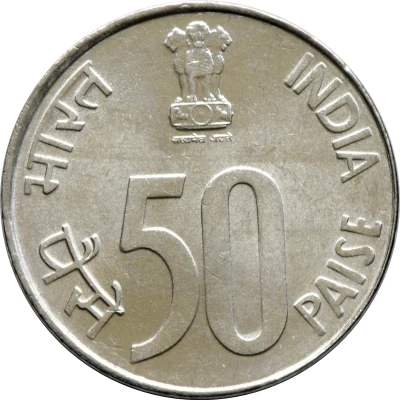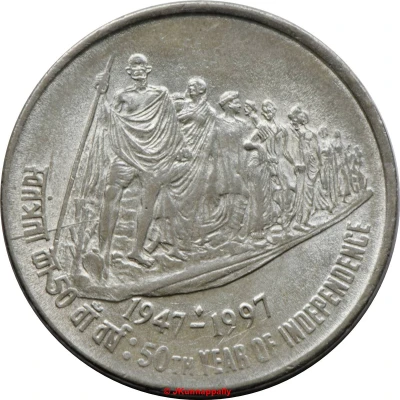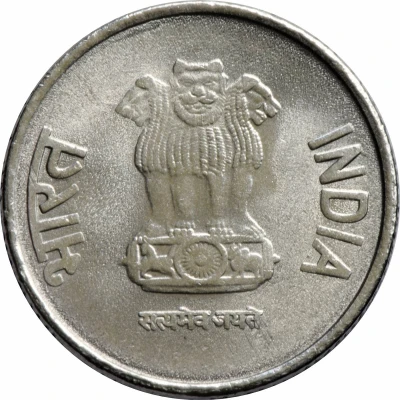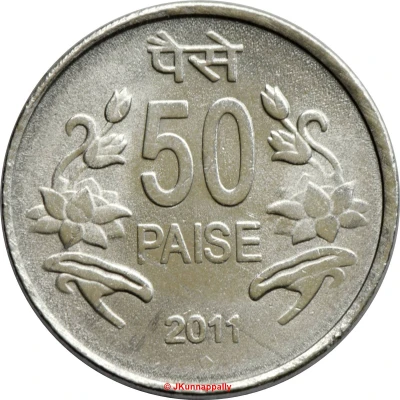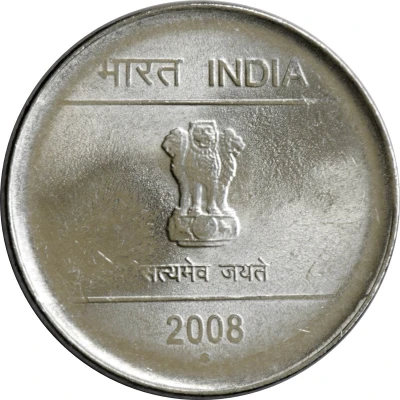
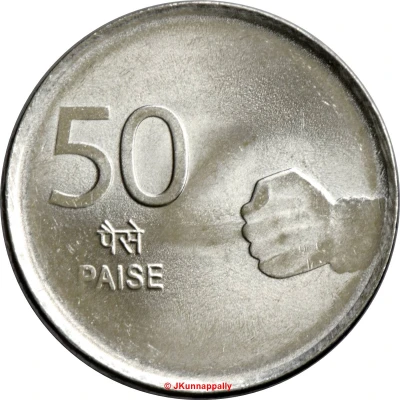

50 Paise
| Stainless steel | 3.8 g | 22 mm |
| Issuer | India |
|---|---|
| Period | Republic (1950-date) |
| Type | Standard circulation coin |
| Years | 2008-2010 |
| Value | 50 Paise 0.50 INR = USD 0.0060 |
| Currency | Rupee (decimalized, 1957-date) |
| Composition | Stainless steel |
| Weight | 3.8 g |
| Diameter | 22 mm |
| Thickness | 1.62 mm |
| Shape | Round |
| Technique | Milled |
| Orientation | Medal alignment ↑↑ |
| Updated | 2024-10-05 |
| Numista | N#5698 |
|---|---|
| Rarity index | 8% |
Reverse
Part of the Hasta Mudra (hand signs)series. Various Hasta Mudras are used in Indian dance.
Sign language symbol; fist
Lettering: 50 पैसे PAISE
Edge
Plain
Comment
In a country of 400 languages and over a dozen writing systems, it's important to think carefully about which ones to use. Most Indian scripts have their own numeral system, and numbers can be written in many different ways. This is where the design of Professor Anil Sinha of the National Institute of Design came into play. As well as using Arabic-Indian numerals to indicate their values, the 1, 2 and 5 rupee coins featured images of hands showing the appropriate number of fingers.
Interesting fact
The 50 Paise coin from India, which was in circulation from 2008 to 2010, has a unique feature that sets it apart from other coins. It has a concentric circle design on its reverse side, which is not commonly found in other coins. The outer circle represents the rupee symbol, while the inner circle features the denomination (50 Paise) in Devanagari script. This design element adds an extra layer of security and makes the coin easily identifiable.
Price
| Date | Mintage | VG | F | VF | XF | AU | UNC |
|---|---|---|---|---|---|---|---|
| 2008 | - | - | - | - | - | - | |
| 2008 • | - | - | - | - | - | - | |
| 2008 ★ | - | - | - | - | - | - | |
| 2009 | - | - | - | - | - | - | |
| 2009 ♦ | - | - | - | - | - | - | |
| 2010 | - | - | - | - | - | - |
Values in the table are based on evaluations by sales realized on Internet platforms. They serve as an indication only for 50 Paise 2008-2010 coin.
